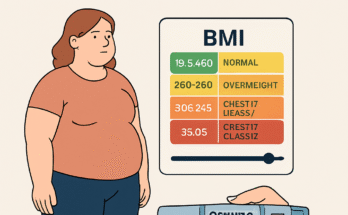If you’re on Ozempic and eyeing Wegovy as your next step for weight loss, you’re not alone. The buzz around these two medications is hard to miss—both are powerhouse GLP-1 receptor agonists, transforming lives by helping people shed pounds and manage health conditions. But can you switch from Ozempic to Wegovy for weight loss? And should you? As an expert, I’m here to unpack the science, share real-world insights, and guide you through the decision with an engaging, no-nonsense approach. Let’s dive into the details, weigh the pros and cons, and help you feel empowered to make the best choice for your health journey.
Ozempic vs. Wegovy: Same Active Ingredient, Different Goals
Ozempic and Wegovy share a key ingredient: semaglutide. This GLP-1 receptor agonist mimics a hormone that regulates blood sugar, slows digestion, and curbs appetite, making it a superstar for both diabetes management and weight loss. While they’re chemically similar, their purposes, dosing, and approvals differ. Ozempic is FDA-approved for type 2 diabetes, helping control blood sugar and reduce cardiovascular risks. It’s often prescribed off-label for weight loss, with doses ranging from 0.25 mg to 2 mg weekly, delivered via a pre-filled pen. Wegovy, on the other hand, is specifically FDA-approved for chronic weight management in adults with obesity (BMI ≥30) or overweight (BMI ≥27) with weight-related conditions like hypertension. Wegovy’s maximum dose is 2.4 mg weekly, higher than Ozempic’s typical max, and it’s designed to optimize weight loss. Both drugs are manufactured by Novo Nordisk and administered as weekly subcutaneous injections. The higher dose in Wegovy is tailored for weight loss, potentially leading to greater reductions in body weight compared to Ozempic. But does that mean switching is the right move? Let’s explore.
Why Consider Switching?
You might be thinking about switching from Ozempic to Wegovy for several reasons. If you’ve hit a weight loss plateau on Ozempic, Wegovy’s higher dose (up to 2.4 mg) might offer a boost. Clinical trials, like the STEP 1 study published in The New England Journal of Medicine in 2021, showed Wegovy users lost an average of 14.9% of their body weight over 68 weeks, compared to 7–10% for Ozempic users in similar studies. Wegovy’s specific approval for weight management might align better with your goals, especially if you’re using Ozempic off-label and want a treatment designed for weight loss. Some insurance plans cover Wegovy for weight loss but not Ozempic for off-label use, making the switch financially appealing. If you’re tolerating Ozempic well, you might feel ready to handle Wegovy’s higher dose to accelerate progress. Conversely, if side effects like nausea or heartburn are tough on Ozempic, you might wonder if Wegovy’s dosing schedule could be better. Real-world experiences shared on platforms like X highlight these motivations. One user posted, “Switched from Ozempic 1 mg to Wegovy 2.4 mg, and the weight loss kicked into high gear!” Another noted, “My insurance only covered Wegovy for weight loss, so I made the switch.” But switching isn’t a simple flip—there are factors to consider.
Can You Switch? The Short Answer
Yes, you can switch from Ozempic to Wegovy, but it’s not a decision to make on a whim. Since both contain semaglutide, transitioning is generally straightforward, but it requires careful planning with your healthcare provider. Because both drugs are semaglutide, there’s no need for a “washout” period (a break between medications). You can typically start Wegovy the week after your last Ozempic dose. If you’re on a high dose of Ozempic (e.g., 1 mg or 2 mg), your doctor might start you on a mid-range Wegovy dose (e.g., 1.7 mg) to avoid side effects like nausea or gastrointestinal upset. If you’re on a lower Ozempic dose (e.g., 0.5 mg), you’d likely follow Wegovy’s standard titration schedule: 0.25 mg for 4 weeks, then 0.5 mg, 1 mg, 1.7 mg, and finally 2.4 mg, with each step lasting 4 weeks. Your doctor will assess your health goals, current dose, side effects, and insurance coverage to create a tailored transition plan.
What to Expect When Switching
Switching from Ozempic to Wegovy is usually smooth, but there are a few things to keep in mind. Wegovy’s higher dose might intensify side effects like nausea, vomiting, or heartburn, especially during titration. Starting at a lower dose and gradually increasing can help. A 2023 study in Diabetes, Obesity and Metabolism noted that side effects are dose-dependent but often subside as your body adjusts. Wegovy’s higher dose may lead to more significant weight loss. In clinical trials, Wegovy users lost 5–10% more body weight than Ozempic users at comparable doses. However, individual results vary based on diet, exercise, and adherence. Without insurance, Ozempic and Wegovy can cost $1,000–$1,400 monthly. Check your insurance coverage, as Wegovy may be covered for weight loss but not Ozempic. Novo Nordisk also offers savings cards for both medications. Both drugs work best with a reduced-calorie diet and increased physical activity. Switching won’t magically solve weight loss challenges if lifestyle changes aren’t in place.
Potential Challenges and Risks
Switching isn’t risk-free. The jump to Wegovy’s 2.4 mg dose can amplify gastrointestinal issues, especially if you struggled with Ozempic’s side effects. If your insurance doesn’t cover Wegovy or requires prior authorization, you might face delays or out-of-pocket costs. Both Ozempic and Wegovy have faced supply issues, as reported on X and in news outlets. Switching during a shortage could be tricky. If you’re on Ozempic for type 2 diabetes, switching to Wegovy (which isn’t approved for diabetes) could affect blood sugar control. Your doctor may need to adjust other medications.
How to Make the Switch Successfully
Ready to talk to your doctor about switching? Consult your doctor to discuss your weight loss goals, current Ozempic dose, side effects, and insurance coverage. They can map out a titration plan to minimize side effects. Don’t rush to the 2.4 mg Wegovy dose—gradual increases (every 4 weeks) help your body adjust. Keep a journal of symptoms like nausea or heartburn. If they’re severe, your doctor might pause titration or prescribe anti-nausea medication. Pair Wegovy with a balanced diet (low in fatty or spicy foods to reduce heartburn) and regular exercise to maximize weight loss. Confirm coverage for Wegovy and explore savings programs at Novo Nordisk’s website.
Final Thoughts
Switching from Ozempic to Wegovy for weight loss is a viable option for many, thanks to their shared active ingredient and similar mechanisms. Wegovy’s higher dose and weight-loss-specific approval might give your journey the boost you’re seeking, but it’s not a one-size-fits-all solution. With your doctor’s guidance, a smart titration plan, and a commitment to lifestyle changes, you can make the switch with confidence. Don’t let uncertainty hold you back—talk to your healthcare provider, explore your options, and take charge of your health. Your weight loss goals are within reach, and you’ve got this!
FAQs
1. Do I need to stop Ozempic before starting Wegovy?
No, since both contain semaglutide, you can start Wegovy the week after your last Ozempic dose. Your doctor will determine the starting Wegovy dose based on your current Ozempic dose.
2. Will I lose more weight on Wegovy than Ozempic?
Possibly. Wegovy’s higher dose (up to 2.4 mg) is designed for weight loss and may lead to greater weight reduction (up to 15% of body weight) compared to Ozempic (7–10%). Results depend on lifestyle and adherence.
3. Can I switch back to Ozempic if Wegovy doesn’t work out?
Yes, you can switch back to Ozempic under medical supervision, especially if you need it for diabetes management. Your doctor will adjust the dose and monitor your blood sugar.

Jake Morrison is a health journalist and certified medical researcher who specializes in obesity treatment and diabetes care. With a background in biomedical science and years spent analyzing real-world outcomes of GLP-1 therapies like Ozempic, Jake brings an evidence-driven, reader-friendly approach to complex medical topics.




